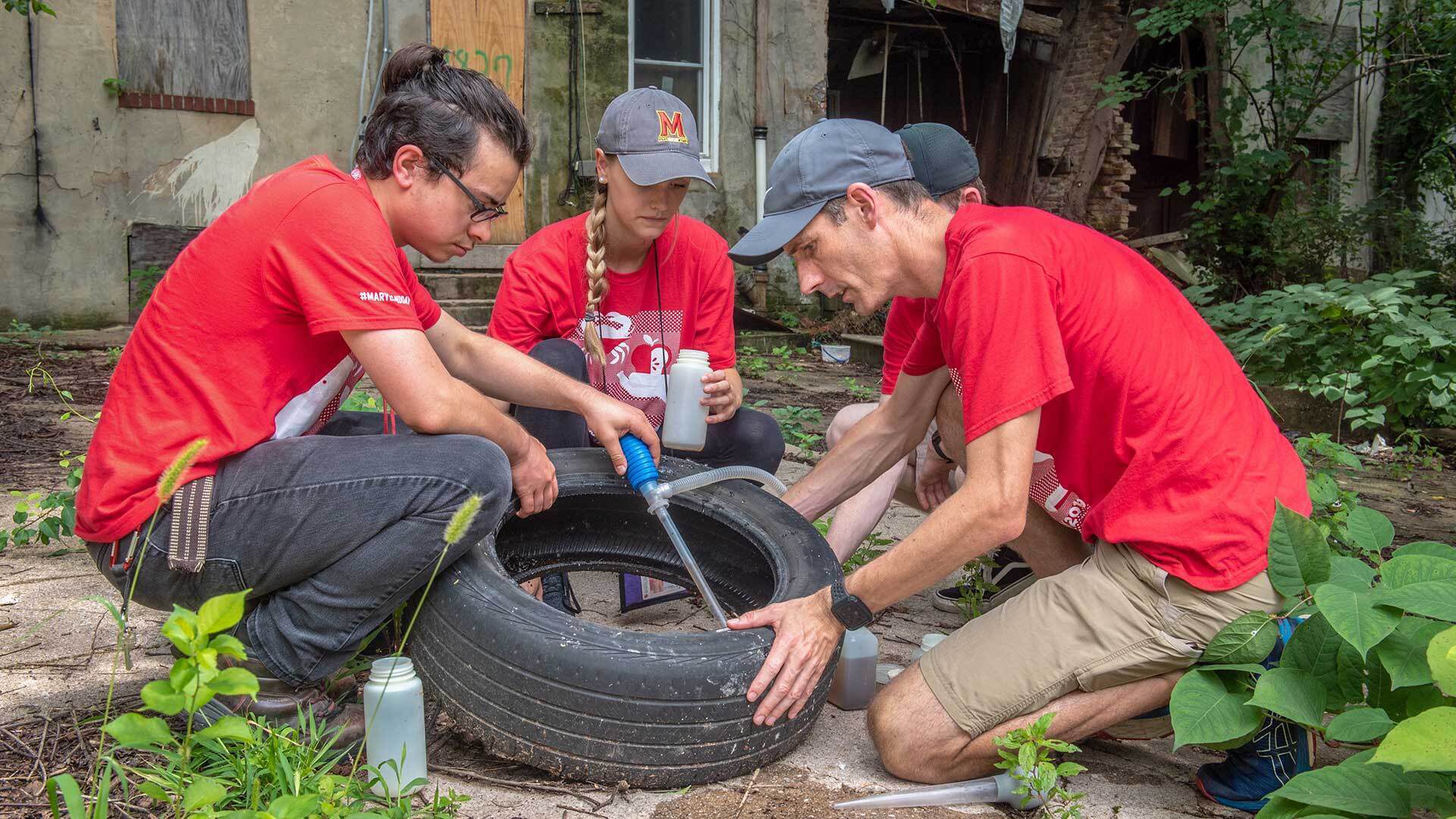- July 24, 2019
- By Liam Farrell
In the alley behind the 1800 block of Vine Street in West Baltimore, Paul Leisnham and a handful of UMD students are on the hunt for the right kind of trash.
It’s a promising location of mostly abandoned rowhomes. Some have their entire insides exposed due to crumbling walls—a toilet even hangs off a second floor—and broken, soggy detritus is piled along the ground.
Walking through the area on a swampy June morning, Leisnham, an associate professor in the Department of Environmental Science and Technology, and the students eventually find what they are looking for: a water-filled tire abandoned in a shady lot overgrown with weeds and untrimmed shrubs. It’s the perfect place for mosquitoes, and with just a turkey baster and a couple containers, the UMD crew confirms baby bloodsuckers are in there.
Leisnham’s work identifying and sampling the city’s mosquito population is part of a new UMD project to make urban environments more comfortable, welcoming and environmentally sustainable.
“If people have this pest in their backyard, it alters their behavior,” Leisnham says. “Immediately, they have a negative perception of urban green space and stormwater practices that collect water.”
With a $1.5 million grant from the National Science Foundation, researchers from disciplines ranging from landscape architecture and environmental health to bioengineering will work in neighborhoods in Baltimore, Prince George’s County and Washington, D.C., to identify how garbage, vacant lots and failing infrastructure impact residents’ health and perceptions in places with the copious hard surfaces and refuse that capture rain and produce pests. The ultimate goal will be to find effective outreach techniques to promote community caretaking as well as put in accessible, small-scale solutions like urban gardens or rain barrels to address excessive stormwater.
The UMD team is consulting on the project with community partners as well, including the Anacostia Watershed Society, the Parks & People Foundation and Blue Water Baltimore.
“We still haven’t got a good handle on stormwater management,” Leisnham says. “In the past, there’s been a real disconnect (between residents and experts).”
That’s partially because what helps prevent stormwater runoff in urban places, like areas with natural vegetation and rain barrels, can be mistaken for the sort of habitats that breed mosquitoes, Leisnham says. But if managed correctly, well-maintained green space and functional containers are far better than a vacant lot with impervious surfaces and dumped trash, where a bottle cap full of stagnant water can be enough to propagate pests.
Since a “large swath of the city is sort of nature-deprived,” says Steve Preston, a construction and design manager with the Parks & People Foundation, these spaces can become a source of neighborhood pride—and if a pile of old tires disappears, it’s unlikely another will take its place.
“People have waited decades for green space,” Preston says. “Once they are improved, people want to take care of it.”
